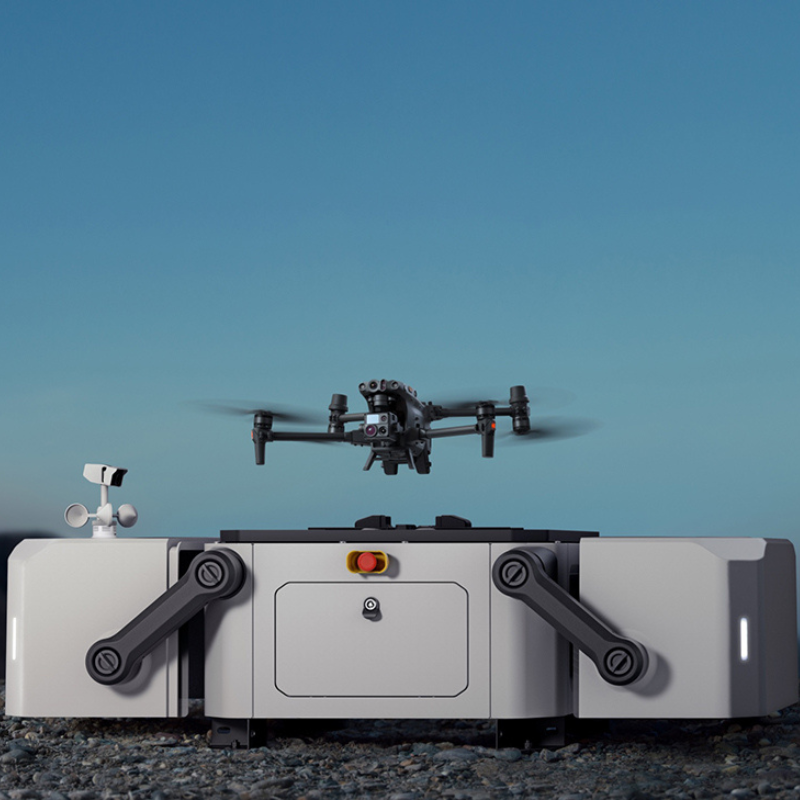
Products
DJI Dock: Building Your Safety Case And UK BVLOS Pathway
How to build a safety case to operate the DJI Dock drone in a box, from VLOS through to BVLOS drone deployment.
How to build a safety case to operate the DJI Dock - an exciting drone in a box solution, designed for remote monitoring and autonomous deployment;
The DJI Dock can be used within a visual line of sight (VLOS) capacity, but beyond visual line of sight (BVLOS) deployment will enable operators to realise the system's full potential;
Building a safety case needs to be done in a progressive, step-by-step approach, from VLOS through to EVLOS and then BVLOS: Where drone programmes enter the process depends on their current operational experience and permissions;
Recent approval of a drone highway is a positive step forward as the industry moves towards routine BVLOS operations in UK airspace;
heliguy™ can support each organisation's pathway to BVLOS: OSC consultancy, BVLOS experience, development of EVLOS training modules, and partnerships with UTM providers. heliguy™ is also a DJI Dock partner.
The DJI Dock: A powerful solution for remote monitoring and autonomous UAS deployment.
This exciting addition to the revolutionary drone in a box landscape will enable spontaneous or scheduled round-the-clock operations for on-demand, real-time data acquisition - centrally-managed from afar via cloud-based software.

So how do adopters of this innovative technology unlock the system's huge potential - especially working towards BVLOS permissions to unleash its full capabilities? After all, for all the dock can be used in a VLOS capacity, beyond visual line of sight deployment is the fundamental end goal to maximise the drone in a box workflow.
From a drone programme's perspective, building a robust, watertight safety case is essential. And this needs to be conducted in a progressive, step-by-step approach, gradually growing operational currency and compiling a dossier of evidence to demonstrate the use case, mitigation strategies and operational competency. Test, test and test some more, mature your safety case in a phased manner and work towards loosening the legislative leash.
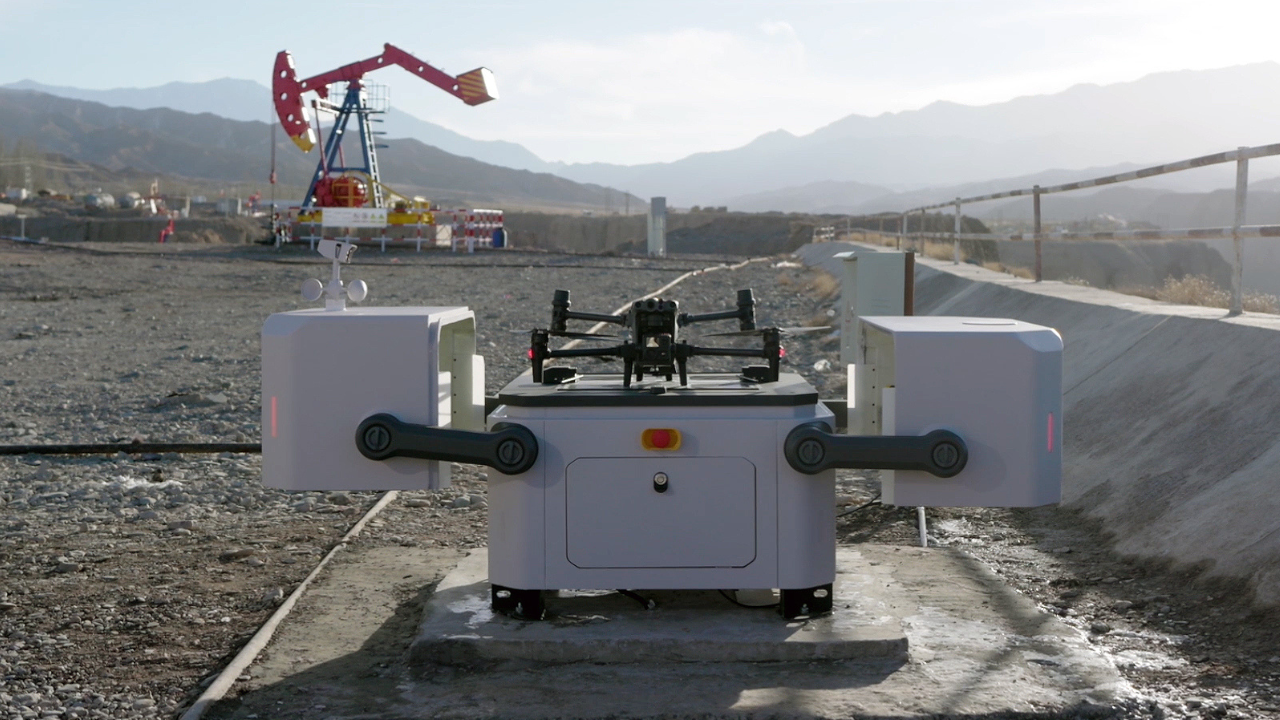
Crucially, this needs to run alongside the regulatory framework. BVLOS operations in segregated airspace are not a complete no go in the UK, but currently they are bound by stringent criteria, controls and exemptions, while moves to implement routine BVLOS flights in non-segregated airspace are at the experimental, proof of concept stage.
It's not to say it won't happen: On the contrary, there is a huge appetite for this, with the CAA's Innovation Hub aspiring to enable BVLOS in non-segregated airspace in the coming years through a Detect & Avoid ecosystem (involving different technologies, such as ground-based infrastructure, on-board detect/avoid equipment, and UTM to see, sense or detect conflicting traffic or other hazards and take the appropriate action).
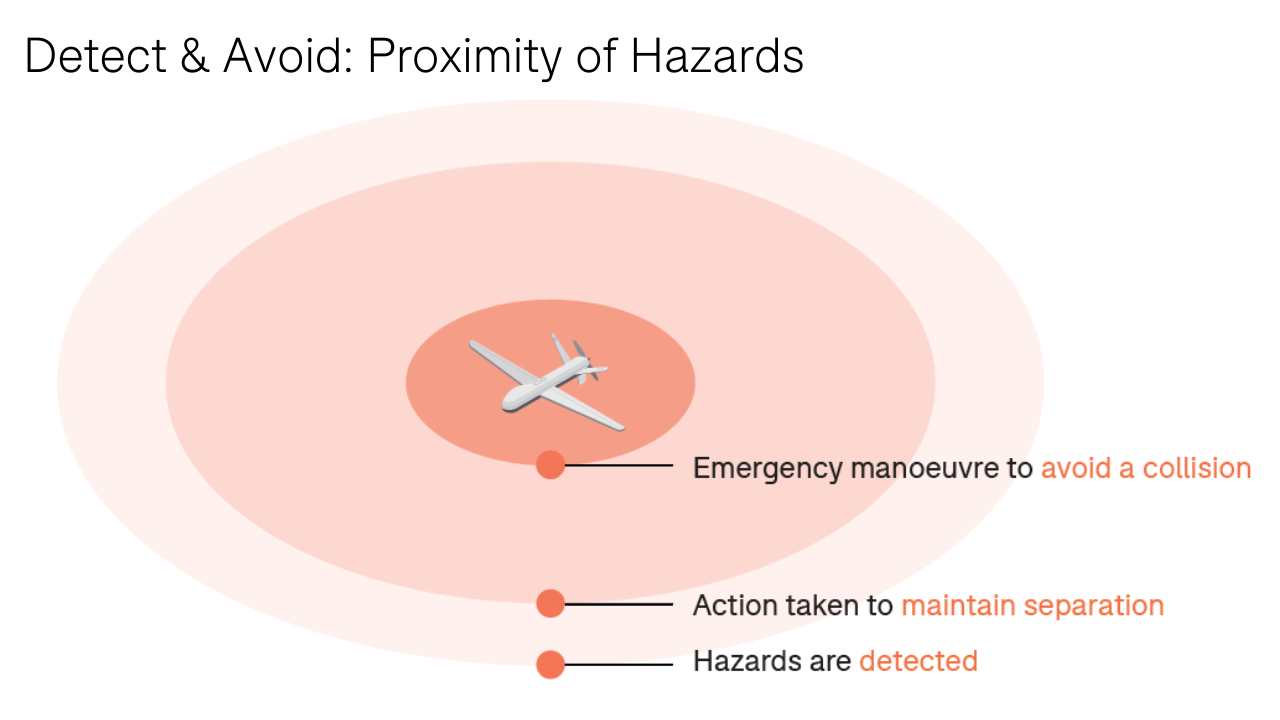
And the recent sign-off by the UK Government for a drone superhighway - or Skyway - to be implemented over the next two years for automated, pilotless operations in parts of England is a significant milestone.
It follows last year's approval granted to sees.ai - a command and control solution developer - to trial a concept for routine BVLOS operations at three pre-designated sites: A breakthrough which heliguy™'s OSC consultant, Josh Williams - who is already compiling several BVLOS OSCs - said could pave the way for low-level BVLOS operations and enable drone in the box solutions to flourish, given that repetitive inspection operations are suitable to be conducted at low level.
It's encouraging stuff, momentum is building and things are progressing, but there is still work to do to make routine BVLOS operations the norm.
However, regardless of the pace of legislative change, it is a fundamental requirement for each organisation to put in the hard yards to ensure they are perfectly positioned to obtain BVLOS permissions - as and when the time is right.
Therefore, thinking ahead and laying the foundations early could be a prudent approach - especially as the process of integrating a drone in a box on a jobsite comes with its own timeline and specific considerations and governance.
Of course, every dock user will enter at different stages of the process. But for those at the beginning of the regulatory roadmap it is essential to start clocking up the hours in a VLOS capacity, undergoing an undefined period of operations to obtain a quantifiable competency, and building from there. The heliguy™ training team can provide advice/support to help organisations through the VLOS stage.

Remember, the dock can be utilised in VLOS deployments. So organisations can integrate it into their existing operations - using it in a VLOS capacity, under supervision - to begin proving the drone in a box concept and maturing their safety case 'on the job', setting the foundations for future operational expansion.
The dock is not necessarily needed for clocking VLOS hours, though.
But either way, this initial phase of logging VLOS hours does present an ideal opportunity to try the associated DJI drone in a box infrastructure: Namely the M30 Series drone and FlightHub 2. Read more about proving the concept of the M30 and FlightHub 2, here.
Even at this stage of VLOS operations, FlightHub 2 can be used to remotely plan and centrally manage data: The perfect Litmus test to analyse how this cloud-based software can fit into or bolster existing workflows and be used as part of a fully-fledged remotely-operated drone in a box ecosystem further down the line.
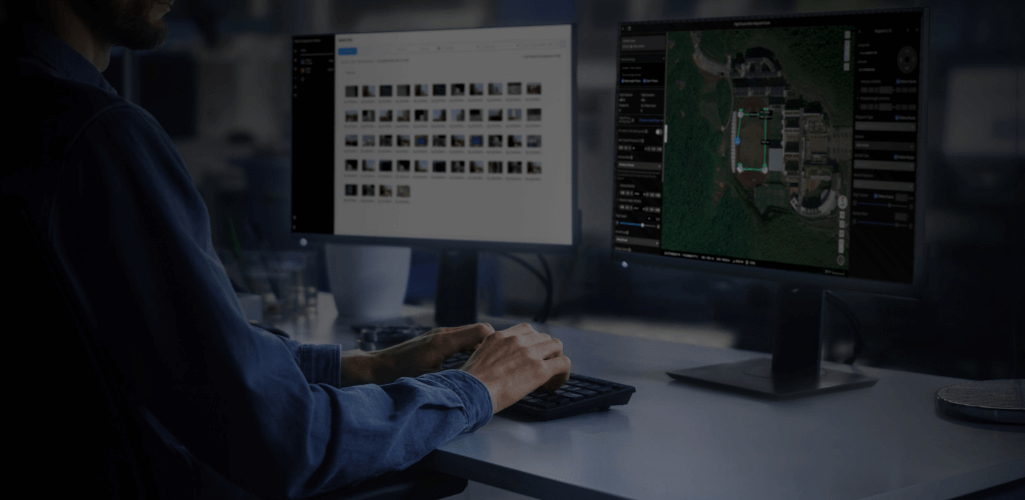
Once suitable VLOS hours are in the bag, organisations can begin to move towards EVLOS and latterly BVLOS permissions. For these stages, a UAS OSC is required. heliguy™ has an OSC consultancy to help applicants through the process.
The heliguy™ training team has considerable BVLOS experience -and is developing an EVLOS module as part of the TQUK Level 5 Award for UAS Operations Manager (RQF) course. heliguy™ has also been working with UTM providers to prepare for, advance and advocate BVLOS operations to strengthen a pathway towards remote and autonomous operations.
But even after an organisation is granted permission by the CAA for BVLOS operations, work is still required to maximise this opportunity.
This BVLOS Development Pathway, as cited in CAP 1861 and pictured below, shows an indicative route that drone programmes will need to follow to move from BVLOS in segregated airspace through to reaching that Holy Grail of routine BVLOS operations in non-segregated airspace.
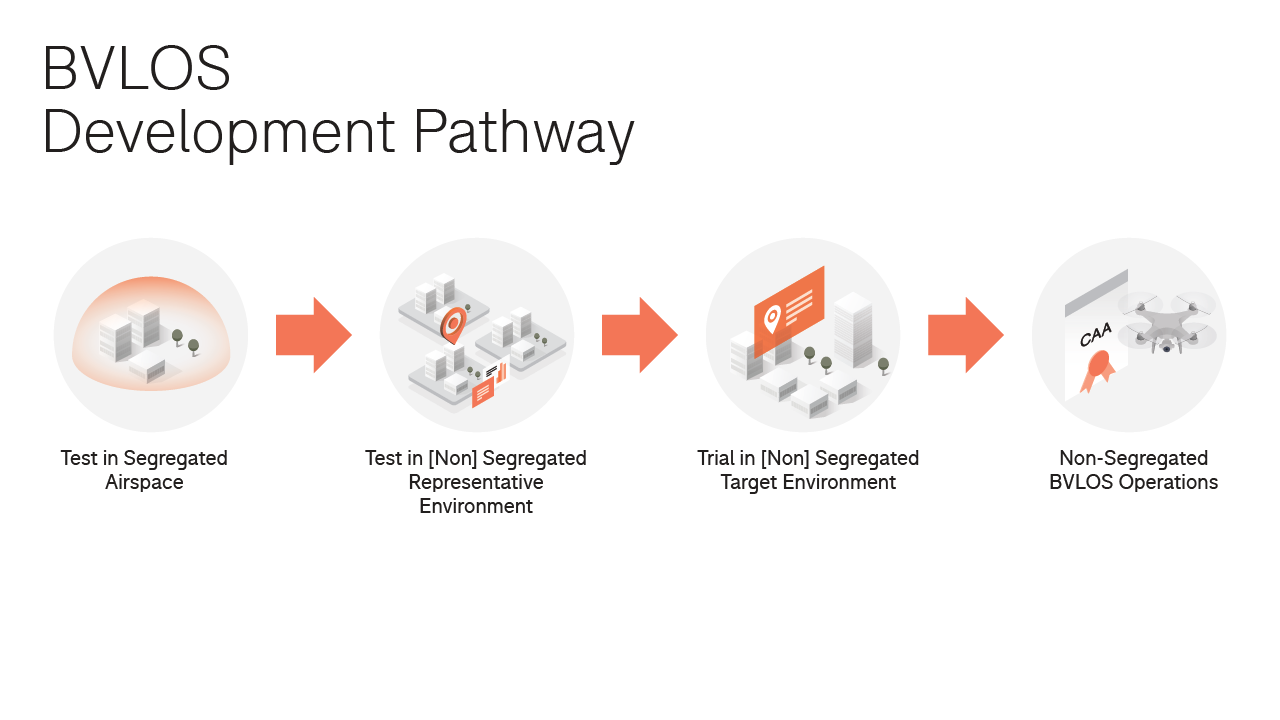
So, what do each of these stages mean?
Step 1 - Test In Segregated Airspace: Test and development of a Detect & Avoid solution in a safe, segregated environment where the operator has control over the air and ground hazards. Evidence needs to provide sufficient assurance to allow testing with other aircraft sharing the same airspace.
Step 2 - Test In [Non] Segregated Representative Environment: Test and development of the Detect & Avoid solution in a safe environment that is representative of the intended operation, where the operator has full visibility of other airspace users and ground hazards. Evidence needs to provide sufficient assurance to allow operation in the non-segregated airspace intended for the operation.
Step 3 - Trial in [Non] Segregated Target Environment: Tests of the Detect & Avoid solution in the non-segregated airspace intended for the operation. Evidence needs to provide the assurance that the solution is safe and reliable in the operational environment to allow an exemption to be given.
Step 4 - Non-Segregated BVLOS Operations: CAA approval for BVLOS operations in non-segregated airspace.
Like the VLOS operations before it, this CAA blueprint demonstrates the requirement to continue to build a robust safety case and compile a ledger of evidence based on thorough test data to achieve greater operational freedoms within the BVLOS framework.
A case in point is Network Rail. Last year, the infrastructure firm completed a civilian BVLOS drone flight over dry land - flying 25km along East West Railway, with a Network Rail helicopter flying alongside the drone.

It represented Step One in the BVLOS pathway and offered a compelling use case and a major step forward for this type of application. But in Network Rail's own words, it was purely a proof-of-concept flight and a shift to using BVLOS as business as usual will take some time.
Summary
So, what does it all mean? To summarise, there is no short way of achieving BVLOS permissions. The road is long, but the opportunities are vast.
Of course, compiling a safety case runs parallel to legislative evolution - something which won't happen overnight.
In the meantime, organisations have a window of opportunity to prove the concept of drone in a box within their operational framework - which is a big task in itself.
And as a DJI Dock partner, heliguy™ will help organisations through this process, offering end-to-end support and consultancy. Using our years of industry experience, in-house technical capabilities, and training ecosystem, including the OSC consultancy, we'll facilitate each programme's adoption and deployment of this drone in a box solution.
Contact heliguy™ to discuss the DJI Dock and training pathway.
